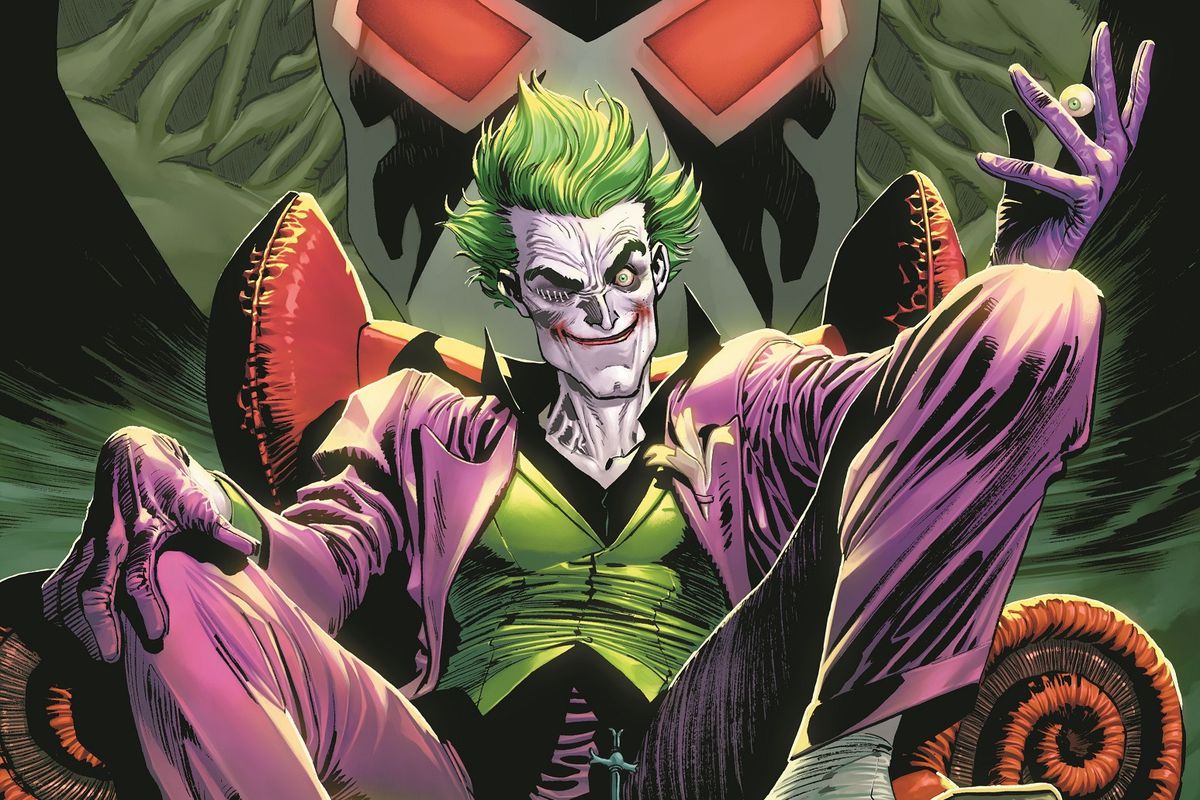If you approach the character from a cultural perspective, you will see that he is a couple of thousand years old. In essence, the Joker is a trickster, not unlike the folkloric Loki and Mephistopheles, a vicious and insidious creature who mocks what people revere, the embodiment of pure nihilism. Its predecessors can be found in almost every culture and time, whether it is a forest spirit with a peculiar sense of humour or a fairground Harlequin, mocking poor Pierrot. Maybe that’s why the Joker has stuck around: he’s always been around.
The Joker’s first appearance
In his familiar form, the terrorist clown appeared in 1940. Who the father of this character really is is a mystery that is not destined to be solved. Each of the three men working on Batman comics at the time – Bob Kane, Bill Finger and Gerry Robinson – claimed that he had created the Joker and that the others had merely taken the idea.
To establish who is right is impossible. But he knows exactly the source of inspiration: the German actor Conrad Feydt in the form of Guinplen from the 1928 adaptation of Victor Hugo’s novel “The Man Who Laughs”. Also, oddly enough, the Joker of the cards.
Those who think that the Joker was initially a merry criminal Balaguer and that he did not start killing until the end of the 20th century know little about the history of comics. The so-called Golden Age, which lasted from the late 1930s to the early 1950s, was full of blood. Batman, for example, did not immediately become a crude moralist and in his day did not take on gangsters. He didn’t shoot point-blank, of course, but if he had to throw another gangster off a roof, he didn’t hesitate. And so the Joker made his comic book debut as a true serial killer.
In Batman #1, the newly-minted villain announced the names of his victims, usually Gotham’s urban elite, over the radio, and they died with unnatural smiles on their faces within exactly twenty-four hours. The maniac’s goal was simple: to spread fear and gain credibility with the local gangsters based on it. A sensible enough plan. The first Joker was far from insane. Brutal, cold-blooded, resourceful, but hardly mad. He barely laughed.
But there was something irrational about him. The evil buffoon decided he didn’t want to know who was hiding under Batman’s mask, and even refused to kill the hero at the first opportunity, not funny like that. If you draw parallels between the first Joker and Heath Ledger’s performance, the villain’s image in The Dark Knight no longer seems so uncanonical.
When the Joker was funny
For a whole decade, none of the screenwriters thought to explain why the character had white skin and green hair. However, it was unusual in Batman comics. The Joker was, by and large, the first full-fledged supervillain of the Bat-universe – before him, Bruce Wayne fought common criminals. The story of the red-capped thief who falls into a vat of chemicals didn’t appear until the early 1950s and is still considered canon.
Around the same time, conservative psychiatrist Fredric Wertham published the controversial book Corruption of the Innocent, in which he argued that comic books obstructed children’s minds and led them down a crooked path. The work made a lot of noise, and publishers across America were forced to adopt the “Comics Code”, which required writers and artists to exercise strict self-censorship. Thus began the Silver Age, an era of fun, harmless, monotonous adventures.
Batman and the Joker also fell under the radar, becoming a noble knight and a mischievous clown respectively. Murder was now out of the question. Its place was taken by themed crime. Pumping gas in the city and making everyone throw away their jewellery, stealing dressed as Charlie Chaplin or Buster Keaton, running from the police and making the cops laugh helplessly: that was what the white-faced villain wanted now. And what kind of villain was he? Just a bully and a troublemaker.
In the 1960s, the Joker finally got his first screen incarnation in the TV series “Batman” with Adam West. He played the Cuban-born actor César Romero, who until then had mostly played hero-lovers. In a new role, however, he was brilliant. The Joker was loud, goofy, but charming, just like the series itself.
No more jokes
In the 1970s, the kindness pills he had been fed for twenty years were slowly beginning to take their toll on the Joker. Violence was creeping into popular culture, especially in the movies, and comics couldn’t help but succumb to the general trend. It was then that the Dark Knight saga adopted the familiar trappings of the dystopian detective thriller.
The first sign of the homicidal clown’s return was the 1973 storyline, The Joker’s Five Forms of Revenge. In it, the villain once again escaped from custody, but instead of committing senseless crimes, he began punishing former associates who had abandoned the ringleader to his fate. And the punishment didn’t consist of throwing a pie in his face, no, it was mature. Two were poisoned with laughing poison, another put out a cigarette with nitroglycerine and the fourth was simply hanged by the maniac. The last author was supposed to be a mouthful for the shark, but Batman saved him.
The real renaissance of the Joker came in the 1980s, when two stories about him were published that left a deep mark on comic book history. Alan Moore’s The Killing Joke has been heard at least once by anyone interested in geek culture. This graphic novel has always been one of the must-read comics. There are many reasons for this.
Firstly, after the events of The Killing Joke, Barbara Gordon, aka Batgirl, was confined to a wheelchair. This is a bold move on the part of the publisher, as the characters have never been disabled before, far from it.
Secondly, The Killing Joke is the first attempt to show the Joker as a living person, a tragic figure whose madness has a good reason. Through a deft manipulation of emotions, the reader is surprised to discover that he can empathise with the sinister prankster. But it is a mistake to assume that the comic reveals the Joker’s true backstory, no, killing the intrigue DC and Moore would not risk. The novel offers only one possible scenario.
The plot of Death in the Family, on the other hand, sought not to surprise but to delight the reader. The DC audience of the time loved the Joker’s violent antics and hated the second Robin, Jason Todd. The writers created him to replace the overly proper Dick Grayson, who left Batman for free bread and became Nightwing. The new boy wonder was supposed to be the “bad guy”, but instead became a bad character.
The brash, flashy sidekick was so disliked by the public that DC took the unprecedented step of conducting a phone poll to see if Todd would survive another adventure. Readers condemned the guy to a cold-blooded death. His death was neither quick nor painless: the Joker, laughing viciously, beat the young man with an iron bar and, barely alive, abandoned him in a booby-trapped warehouse. Batman tried to save his ward, but all was foreseen.
Eventually, Jason Todd was resurrected, but it took more than a decade. And in the 1980s, Robin’s demise was final and irrevocable. It’s hard to overstate the importance of this plot twist for Batman and the comics industry in general. Subsequent screenwriters forced the Joker to commit far greater villains, beyond all limits. But no one seems to have surpassed The Killing Joke and Death in the Family in effectiveness.
You may also like:

